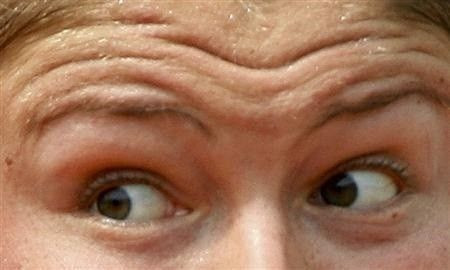Expanded Listing Of Pharma Benefits Scheme Cuts To Only $6.10-$37.70 Eye Medicine Costing $10,000 For 18,000 Aussies

About 18,000 Australians would be spared from blindness annually following the expansion of the Pharmaceutical Benefits Scheme, or PBS. By listing pharma giant Lucentis, the cost of an eye medicine that normally is $10,000 a year would be lowered to $6.10 (concessional) and $37.70 (general).
With the expansion of the list on July 1, taxpayer investment in eye medicines rose to $1.5 billion over four years, said Health Minister Susan Ley in a press release. The Lucentis drugs treat diabetic macular oedema and retinal vein occlusion – vision ailments similar to macular degeneration linked to age.
Macular oedema occurs when the macula, the centre of the retina, becomes swollen with fluid. When it combines in cyst-like patterns, it results in cystoid macular oedema caused by eye surgery, diabetes, blockage in the retina’s veins, eye inflammation, eye injury or side effects of drugs, according to the Cleveland Clinic.
Retinal vein occlusion happens when the veins that return blood flow from the retina are blocked, often caused by blood clots. It would result in blood or fluid build-up in the retina and could impair the retina’s ability to filter light, which could lead to a sudden loss of vision, according to Healthline.
Under the Abbott government, the number of medicines in the PBS has increased to more than 660 worth almost $3 billion since September 2013. It doubled from Labor’s 331 listing over its three-year term, Ley said.
The minister points out, “Access to new medicines is crucial if we’re to help Australians beat life-threatening diseases, as well as overcome chronic and degenerative conditions that rob them of their independence.” Ley adds that the Lucentis listing would assist about 12,000 diabetic macular oedema patients a year and 6,000 retinal vein occlusion patients.
Among the medicines doctors prescribe for diabetic macular oedema are aflibercept, ranibizumab or bevacizumab. A recent trial found that patients who were given 2 milligrammes of aflibercept through intravitreal injections gained more vision after a year compared to patients given 1.25 milligrammes of bevacizumab or 0.3 milligrammes of ranibizumab, reports Medscape.
The Protocol T study, published in the New England Journal of Medicine, was also presented at the American Society of Retina Specialists 2015 Annual Meeting. The Diabetic Retinopathy Clinical Research Network conducted the Protocol T study.
To contact the writer, email: vittoriohernandez@yahoo.com





















